- Clone
- 8F1/CXCR1 (See other available formats)
- Regulatory Status
- RUO
- Other Names
- CD181, CXCR1, CDw128, CD128a, IL-8RA, Type I IL-8 receptor
- Isotype
- Mouse IgG2b, κ
- Ave. Rating
- Submit a Review
- Product Citations
- publications

-

Human peripheral blood granulocytes stained with 8F1/CXCR1 PE/Cyanine5
| Cat # | Size | Price | Quantity Check Availability | Save | ||
|---|---|---|---|---|---|---|
| 320610 | 100 tests | 244€ | ||||
CXCR1 is a 67-70 kD seven-transmembrane protein, also known as IL-8 receptor A (IL-8RA), CD181, and CDw128a. It is a CXC chemokine receptor that belongs to the G protein-coupled receptor (CPCR) family. CXCR1 is expressed as homodimer or heterodimer with CXCR2 and found on granulocytes, NK cells, subset of T lymphocytes, mast cells, monocytes, endothelial cells, megakarocytes, and oligodendrocytes. The expression level of CXCR1 on monocytes is lower than that of CXCR2. CXCR1 mediates neutrophil activation and chemotaxis, megakaryocytic proliferation, and angiogenesis via binding its ligands including IL-8(CXCL8), NAP-2(CXCL7), GCP-2(CXCL6), and GRO-α(CXCL1).
Product DetailsProduct Details
- Verified Reactivity
- Human
- Antibody Type
- Monoclonal
- Host Species
- Mouse
- Immunogen
- Human CXCR1 transfected L1.2 cells
- Formulation
- Phosphate-buffered solution, pH 7.2, containing 0.09% sodium azide and BSA (origin USA)
- Preparation
- The antibody was purified by affinity chromatography, and conjugated with PE/Cyanine5 under optimal conditions.
- Concentration
- Lot-specific (to obtain lot-specific concentration and expiration, please enter the lot number in our Certificate of Analysis online tool.)
- Storage & Handling
- The antibody solution should be stored undiluted between 2°C and 8°C, and protected from prolonged exposure to light. Do not freeze.
- Application
-
FC - Quality tested
- Recommended Usage
-
Each lot of this antibody is quality control tested by immunofluorescent staining with flow cytometric analysis. For flow cytometric staining, the suggested use of this reagent is 5 µl per million cells in 100 µl staining volume or 5 µl per 100 µl of whole blood.
- Excitation Laser
-
Blue Laser (488 nm)
Green Laser (532 nm)/Yellow-Green Laser (561 nm)
- Application Notes
-
Additional reported applications (for the relevant formats) include: The 8F1/CXCR1 antibody is useful for immunofluorescent staining and flow cytometric analysis of CXCR1 expression.
- Additional Product Notes
- BioLegend is in the process of converting the name PE/Cy5 to PE/Cyanine5. The dye molecule remains the same, so you should expect the same quality and performance from our PE/Cyanine5 products. Please contact Technical Service if you have any questions.
- RRID
-
AB_493593 (BioLegend Cat. No. 320610)
Antigen Details
- Structure
- Seven transmembrane spanning, G protein-coupled receptor (CPCR), 67-70 kD, homodier or teterodimer with CXCR2
- Distribution
-
Granulocytes, NK cells, subset of T cells, monocytes, endothelial cells, oligodendrocytes
- Function
- neutrophil activation, chemotaxis, angiogenesis
- Ligand/Receptor
- IL-8(CXCL8), NAP-2(CXCL7), GCP-2(CXCL6), GRO-a(CXCL1)
- Cell Type
- Granulocytes, NK cells, T cells, Monocytes, Endothelial cells, Oligodendrocytes, Neutrophils
- Biology Area
- Angiogenesis, Cell Biology, Immunology, Neuroinflammation, Neuroscience
- Molecular Family
- CD Molecules, Cytokine/Chemokine Receptors, GPCR
- Antigen References
-
1. Chuntharapai A, et al. 1994. J. Immunol. 153:5682.
2. Wilson S, et al. 2005. J. Biol. Chem. 280:28663.
3. Emadi S, et al. 2005. Blood 105:464.
4. Omari KM, et al. 2005. Brain 128:1003.
5. Juremalm M, G. Nilsson. 2005. Chem. Immunol. Allergy. 87:130.
6. Wolf M, et al. 1998. Eur. J. Immunol. 28:164 - Gene ID
- 3577 View all products for this Gene ID
- UniProt
- View information about CD181 on UniProt.org
Related FAQs
- Does staining at room temperature or even at 37°C help for checking chemokine receptors expression?
-
Due to continuous recycling of many chemokine receptors, it may be worthwhile to consider staining at room temperature or at 37°C if the staining at lower temperature (which can potentially reduce receptor turnover) is not optimal.
Other Formats
View All CD181 Reagents Request Custom Conjugation| Description | Clone | Applications |
|---|---|---|
| FITC anti-human CD181 (CXCR1) | 8F1/CXCR1 | FC |
| PE anti-human CD181 (CXCR1) | 8F1/CXCR1 | FC |
| PE/Cyanine5 anti-human CD181 (CXCR1) | 8F1/CXCR1 | FC |
| APC anti-human CD181 (CXCR1) | 8F1/CXCR1 | FC |
| Alexa Fluor® 488 anti-human CD181 (CXCR1) | 8F1/CXCR1 | FC |
| PE/Cyanine7 anti-human CD181 (CXCR1) | 8F1/CXCR1 | FC |
| PerCP/Cyanine5.5 anti-human CD181 (CXCR1) | 8F1/CXCR1 | FC |
| TotalSeq™-C1136 anti-human CD181 (CXCR1) Antibody | 8F1/CXCR1 | PG |
| TotalSeq™-A1136 anti-human CD181 (CXCR1) | 8F1/CXCR1 | PG |
Customers Also Purchased
Compare Data Across All Formats
This data display is provided for general comparisons between formats.
Your actual data may vary due to variations in samples, target cells, instruments and their settings, staining conditions, and other factors.
If you need assistance with selecting the best format contact our expert technical support team.
-
FITC anti-human CD181 (CXCR1)
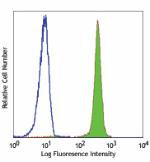
Human peripheral blood granulocytes stained with 8F1/CXCR1 F... -
PE anti-human CD181 (CXCR1)

Human peripheral blood granulocytes stained with 8F1 PE -
PE/Cyanine5 anti-human CD181 (CXCR1)
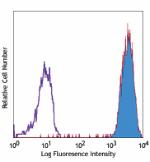
Human peripheral blood granulocytes stained with 8F1/CXCR1 P... -
APC anti-human CD181 (CXCR1)

Human peripheral blood granulocytes stained with 8F1/CXCR1 A... -
Alexa Fluor® 488 anti-human CD181 (CXCR1)
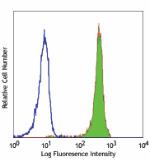
Human peripheral blood granulocytes stained with 8F1/CXCR1 A... -
PE/Cyanine7 anti-human CD181 (CXCR1)
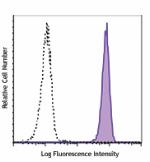
Human peripheral blood granulocytes were stained with anti-h... -
PerCP/Cyanine5.5 anti-human CD181 (CXCR1)

Human peripheral blood granulocytes were stained with CD181 ... -
TotalSeq™-C1136 anti-human CD181 (CXCR1) Antibody
-
TotalSeq™-A1136 anti-human CD181 (CXCR1)
 Login / Register
Login / Register 










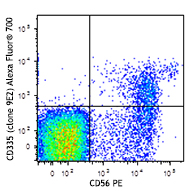

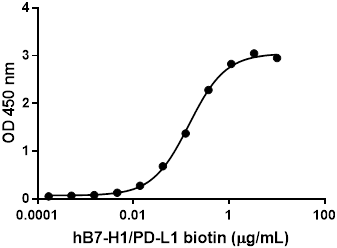
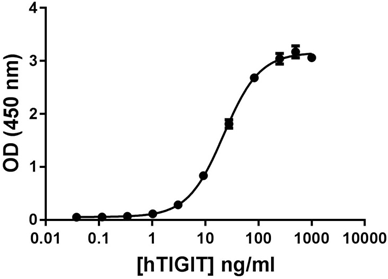



Follow Us